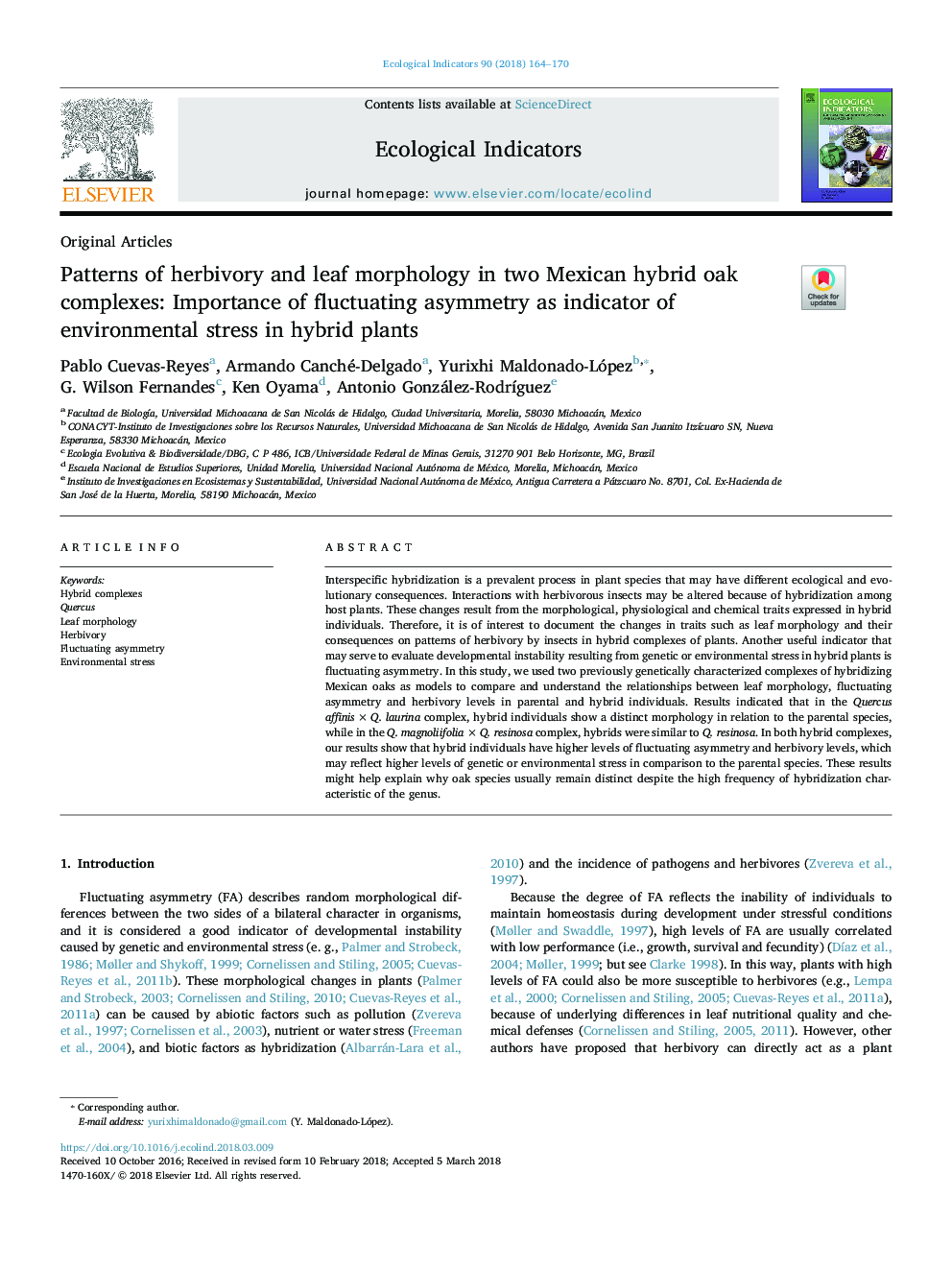| Article ID | Journal | Published Year | Pages | File Type |
|---|---|---|---|---|
| 8845388 | Ecological Indicators | 2018 | 7 Pages |
Abstract
Interspecific hybridization is a prevalent process in plant species that may have different ecological and evolutionary consequences. Interactions with herbivorous insects may be altered because of hybridization among host plants. These changes result from the morphological, physiological and chemical traits expressed in hybrid individuals. Therefore, it is of interest to document the changes in traits such as leaf morphology and their consequences on patterns of herbivory by insects in hybrid complexes of plants. Another useful indicator that may serve to evaluate developmental instability resulting from genetic or environmental stress in hybrid plants is fluctuating asymmetry. In this study, we used two previously genetically characterized complexes of hybridizing Mexican oaks as models to compare and understand the relationships between leaf morphology, fluctuating asymmetry and herbivory levels in parental and hybrid individuals. Results indicated that in the Quercus affinisâ¯Ãâ¯Q. laurina complex, hybrid individuals show a distinct morphology in relation to the parental species, while in the Q. magnoliifoliaâ¯Ãâ¯Q. resinosa complex, hybrids were similar to Q. resinosa. In both hybrid complexes, our results show that hybrid individuals have higher levels of fluctuating asymmetry and herbivory levels, which may reflect higher levels of genetic or environmental stress in comparison to the parental species. These results might help explain why oak species usually remain distinct despite the high frequency of hybridization characteristic of the genus.
Related Topics
Life Sciences
Agricultural and Biological Sciences
Ecology, Evolution, Behavior and Systematics
Authors
Pablo Cuevas-Reyes, Armando Canché-Delgado, Yurixhi Maldonado-López, G. Wilson Fernandes, Ken Oyama, Antonio González-RodrÃguez,
